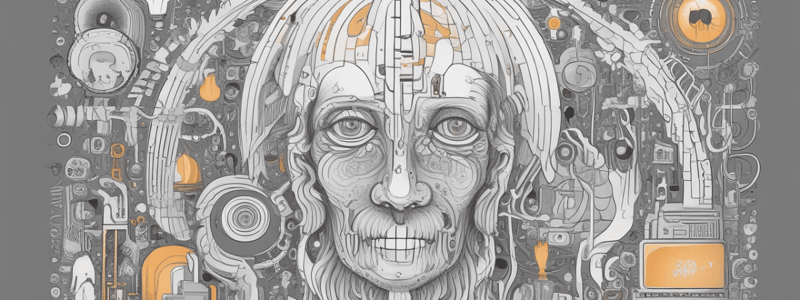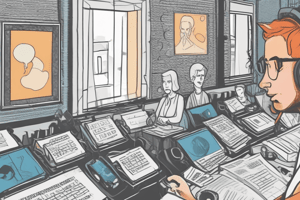Podcast
Questions and Answers
Who are considered experts at recognizing exclusion?
Who are considered experts at recognizing exclusion?
- Designers with formal training
- People who have experienced a high degree of exclusion (correct)
- Business owners
- Technology experts
What is a key component in recognizing and addressing mismatches?
What is a key component in recognizing and addressing mismatches?
- Conducting market research
- Developing a business plan
- Hiring designers with formal training
- Asking who makes a solution (correct)
What is an important skill for a successful inclusive designer to practice?
What is an important skill for a successful inclusive designer to practice?
- Having a traditional design background
- Being an expert in technology
- Having diverse perspectives and expertise (correct)
- Having a business degree
What often gets left out when thinking about human diversity?
What often gets left out when thinking about human diversity?
What is true about exclusion experts?
What is true about exclusion experts?
Why are diverse perspectives and expertise important in the design process?
Why are diverse perspectives and expertise important in the design process?
What is the primary challenge in designing for ability?
What is the primary challenge in designing for ability?
What can exclusion experts do to address their specific needs?
What can exclusion experts do to address their specific needs?
What is a characteristic of a successful inclusive designer?
What is a characteristic of a successful inclusive designer?
What is the social definition of disability according to the World Health Organization?
What is the social definition of disability according to the World Health Organization?
Why is it important to create a diversity of ways for people to participate?
Why is it important to create a diversity of ways for people to participate?
What is the main issue with the medical model of disability?
What is the main issue with the medical model of disability?
What is the primary benefit of recognizing ability biases?
What is the primary benefit of recognizing ability biases?
What is an example of a design that prohibited people from participating?
What is an example of a design that prohibited people from participating?
What is interdependence in the context of design?
What is interdependence in the context of design?
Why is inclusion important in design?
Why is inclusion important in design?
Flashcards are hidden until you start studying
Study Notes
Study Notes: Redefine Inclusive Designers
Learning Objectives
By completing this unit, you will be able to:
- Describe the qualities of successful inclusive designers.
- Discuss ability bias.
- Describe the social definition of disability.
Deciding Who Designs
- Expanded Definition of Designer: Inclusive design involves not just formally trained designers but also exclusion experts who have firsthand experience with exclusion and have solved for mismatches.
- Role of Exclusion Experts: These individuals provide valuable insights and should be involved early in the design process to identify and address exclusion effectively.
Skills for Successful Inclusive Designers
- Identify Ability Biases: Recognize and address biases related to one’s own abilities that can affect design decisions.
- Create Diverse Participation: Design experiences that offer multiple ways for people to participate and engage.
- Design for Interdependence: Foster collaboration by creating designs that allow people with complementary skills to work together.
Ability Bias
- Definition: The tendency to use one's own abilities as a baseline for designing solutions, leading to designs that may only work well for people with similar abilities.
- Impact: Can exclude those with different abilities if not recognized and addressed.
- Example: Designing tools or interfaces that assume a certain level of physical or cognitive ability without considering alternatives for those with different capabilities.
Social Definition of Disability
- WHO’s Definition: Disability is seen as a mismatch between a person’s abilities and their environment or points of interaction, rather than just a medical condition.
- Design Implications: Designers have the responsibility to reduce these mismatches through thoughtful, inclusive design choices.
Creating Diverse Ways to Participate
- Importance: Ensures that a broader range of people can engage with and benefit from a product or experience.
- Example: Adaptive game controllers allow individuals with different physical abilities to play video games, highlighting the need for varied participation methods.
Designing for Interdependence
- Concept: Creating designs that encourage and facilitate complementary skill contributions, promoting a collective and inclusive approach.
- Benefit: Enhances collaboration and ensures that more people can participate effectively.
Summary
To be a successful inclusive designer, one must expand the definition of who can design, actively identify and mitigate ability biases, understand and apply the social definition of disability, create multiple ways for diverse participation, and design for interdependence. Engaging exclusion experts early in the design process and continuously challenging one’s own biases can lead to more inclusive and effective solutions.
Studying That Suits You
Use AI to generate personalized quizzes and flashcards to suit your learning preferences.




